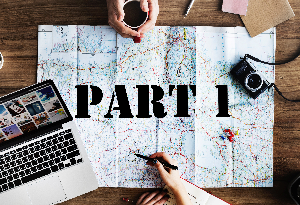
About ten years ago I decided it was time to put together a financial plan document. With several kids now in the picture, I had this nagging feeling that thirty years down the road there would be a list of things I wish I would have done to better prepare for the future. Over the years I’ve expanded it across the following areas:
Goals and Objectives
Initially I started with goals to pay off loans, invest wisely, and setup college savings for the kids. Having a clear picture of these goals in mind helped drive clarity on what actions I need to take next. A financial plan doesn’t have much use if you don’t have a clear goal of what you want to achieve. It reminds me of the Cheshire Cat in Alice in Wonderland:
Alice: “Would you tell me, please, which way I ought to go from here?”
The Cheshire Cat: “That depends a good deal on where you want to get to.”
Alice: “I don’t much care where.”
The Cheshire Cat: “Then it doesn’t much matter which way you go.”
It’s best to set goals that are specific and actionable. For example: pay off the mortgage in 15 years or retire at the age of 50. However, it’s fine to start with something simple like building your wealth.
Emergency Savings
The conventional wisdom is to set aside 3-6 months of liquid funds to cover all of your living expenses. To err on the side of caution, I decided to go with 6 months. I calculated my total monthly living expenses by including everything required to maintain my current quality of life: groceries, utilities, mortgage, auto, insurance, shopping, eating out, etc. I decided that I needed to set aside $25K. The next question was where to put the funds so they earned interest but remained liquid. I opted for an Ally Bank CD ladder for two reasons: the interest rate was very attractive and the early withdrawal penalty on interest was reasonable in case of emergency. I’ve since read compelling arguments for investing 130% of your target emergency savings in a normal investment account. I plan to try this out after my current round of CDs mature. If you are strapped for cash, you can also consider using a Roth IRA for your emergency fund but I personally recommend funding your emergency fund separately from your retirement account to avoid long-term negative impact on your portfolio.
Debt Reduction
When I bought my first home I had second mortgage to avoid paying private mortgage insurance (PMI). That second loan came along with a 8% interest rate that I was determined to eliminate quickly. I decided to set aside 20% of my income to pay this off within a few years. Dedicating that much money was tough but it kept me focused on living within a budget and avoiding unnecessary expenses.
If you’ve got student loans, or credit card debt, payday loans or other personal loads, consider setting aside 20% of your income directed towards the highest interest loans where possible. If you set aside 10% for yourself in long-term savings, and 10% towards charity, this means you will be living off of 60% of your income.
Home Ownership
I made several mistakes when I bought my first home. First, I bought at the peak of the housing bubble. Second, I paid the full price to recruit a buyer’s real estate agent after I had already found a home I wanted to purchase. Instead, I should have negotiated with the seller realtor to lower the price by 3% and then have a real estate lawyer review the contract. The third mistake I made was to do a zero down loan when my debt to income ratio exceeded 33%. Later, when the housing market crashed it was sickening to see my home appraise for 30% less than the original purchase price. In the end, we sold the home for 4% less than the original purchase price (not including realtor fees).
Despite a rough first time buyer experience, I believe home ownership is an important part of a long-term financial plan for a couple of reasons. First, you take pride in something you own and will put effort into taking care of the property. Second, you avoid the markup associated with a rental property. In exchange, you take on the risk that your asset might depreciate in value. Third, diversifying your assets to include real estate is an important part of managing your risk.
If you already own a home, then write down your plans to pay off the mortgage. If you haven’t yet purchased a home, set a goal to save for a down payment or achieve a target debt to income ratio.
Stay tuned for part 2 of Building a Financial Plan.